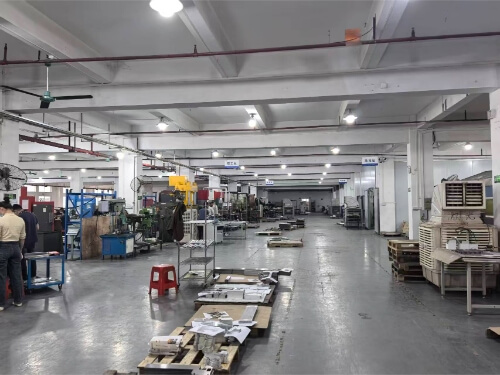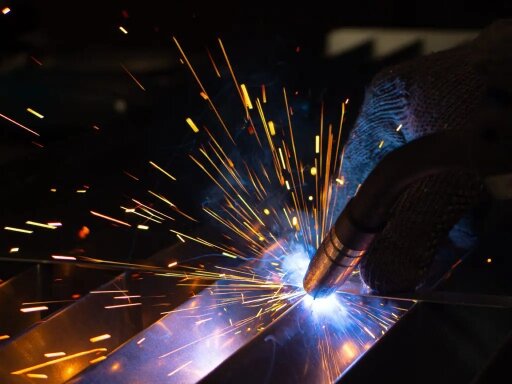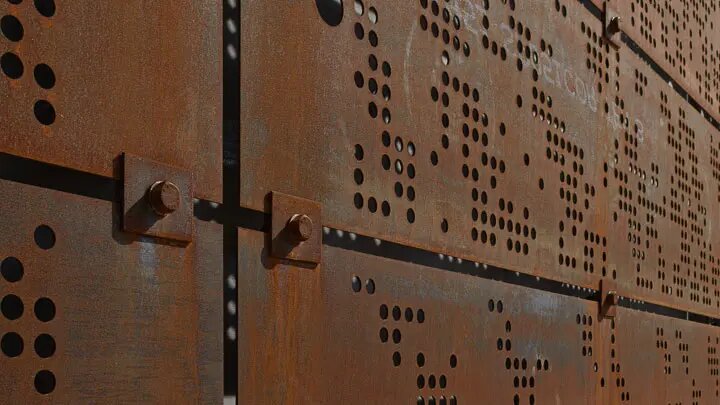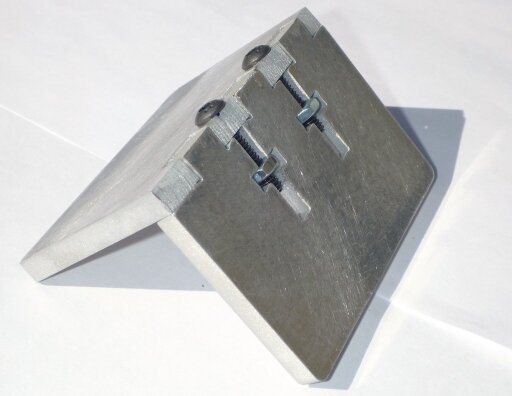Plasma welding is often mentioned when we discuss advanced welding techniques. This method is unique because of its precision and efficiency in joining metals. Why do we use this method in applications that are in high demand? Let’s explore these questions.
The plasma welding process is similar to TIG, but there is a significant difference: the plasma torch. The plasma torch creates a scorching plasma capable of precisely melting metals. This produces stronger and cleaner welds, which are highly appreciated in industries that require meticulous assembly.
Stay tuned as we explore the advantages and applications of plasma welding in the upcoming sections.
Understanding Plasma Welding
What is Plasma Welding?
A constricted arc is used to melt metal precisely in a small area. Ionizing gases create plasma, which conducts electricity. This electric arc generates intense heat that can melt the workpiece and any filler metal.
What makes plasma welding different from other welding techniques?
Plasma welding is superior to traditional welding methods because it allows greater arc and heat input control. It allows for deeper, stronger welds and minimal distortion. This is different from TIG because it can be used at lower amperages. It’s ideal for finer work. Plasma welding produces cleaner welds and less spatter than MIG welding.
The Key Components in a Plasma Welding System
Design and Function of the Plasma Torch
The plasma torch has been explicitly designed to focus and handle the plasma jet. The copper nozzle channels the plasma and focuses it on a small spot on the workpiece.
Power Supply and Control Systems
A DC power supply is used in plasma welding systems to control the heat and stability of the arc. This control is essential for maintaining quality and consistency in welds.
Shielding gases used in plasma welding
In plasma welding, shielding gases are essential in protecting weld areas from contamination by the atmosphere. Gases such as helium and argon are commonly used. These gases can help stabilize the plasma and influence weld characteristics such as penetration or weld bead profiles.
types of plasma welding
Micro Plasma Welding
Applications and Benefits
Microplasma welding has been developed for tasks requiring minimal heat and maximum weld integrity. Its main advantage is its ability to produce robust and consistent welding at low currents between 0.1 and 15 amps. This minimizes heat distortion while allowing greater control of the weld beads.
Material and thicknesses suitable for use
Microplasma welding works best on thin materials that are typically between 0.1mm and 3mm thick. It is versatile and can be used with many metals, including stainless steel, nickel alloys, and titanium.
Keyhole Plasma Welding
What is it, and why do we use it?
When deep penetration welding without filler material is required, keyhole plasma welding can be used. This method is used because it can create a full penetration weld at high speed in one pass.
The advantages of deep penetration techniques
Keyhole Plasma welding has several advantages over other methods of deep penetration welding, such as laser or electron beam welding. It is more versatile in terms of thickness and material type. It is less expensive than laser welding and does not require a vacuum.
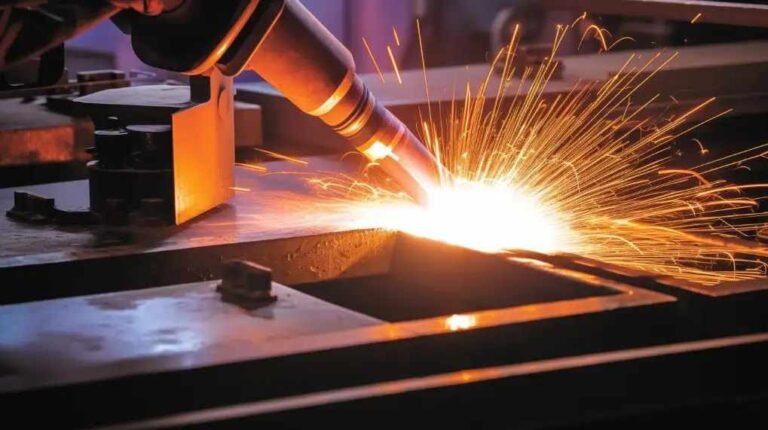
Plasma Welding Process
The Plasma Welding Process: Step by Step
Prepare and take safety measures.
The operator must wear protective clothing, gloves, helmets, and face shields. To avoid toxic fumes, the work area must be adequately ventilated. Cleaning the workpieces is also part of the preparation process to remove contaminants that could affect the weld’s quality.
The Plasma Welding Process Explained
- Setup: Start by connecting the gas and power to the plasma torch.
- Positioning: Position your torch near the workpiece.
- Starting the Pilot Arc: Start the pilot arc to ionize the gas and create plasma.
- The Welding Procedure: Move the torch at constant speed along the weld joint to ensure proper weld formation and even heat distribution.
- After-Weld Heat Treatment: A post-weld treatment is sometimes required after completing the weld. It depends on the application and the material. This is done to reduce stress and improve mechanical properties.
Plasma Welding Variables
Current, voltage, and gas flow rates
Plasma welding is primarily a function of the gas flow rate, voltage, and current. The current, voltage, and gas flow rates must be adjusted depending on the material type and thickness of the weld. The heat output is determined by the current, affecting both the strength and depth of the weld. The voltage affects arc stability and length, while the gas flow rate impacts the cooling of the plasma column, protection, and weld pool stability.
Adapting Parameters to Different Materials
To achieve the best results, different materials require different parameters. To prevent overheating, using lower currents with higher gas flow rates may be necessary when welding thin titanium sheets. In contrast, thicker stainless steel sections may require higher currents with slightly lower gas flows to penetrate deeper.
Plasma Welding Applications
Industrial Applications
- Aerospace and Automotive Sectors: Used to precision weld engine parts and structural elements.
- Electronics Manufacturing: Ideal for the assembly of small and sensitive electronic components.
Unique Applications of Plasma Welding
- Art and Sculpture: Allows artists to create detailed metal artworks and sculptures.
- Repair Work: Used to repair machinery and parts across industries.
Advantages of Plasma Welding
Precision and Control
- Benefits of Thin Sheet Welding: Plasma welding is efficient when joining thin sheets. It is ideal for precision applications such as electronics and fine instrument manufacturing because it achieves high accuracy and minimal distortion.
- Comparisons between TIG and MIG welding: Plasma welding offers better control of the weld pools at lower amperages than TIG welding. This makes it ideal for delicate tasks. It produces cleaner welds with less spatter than MIG welding. This improves both aesthetics and structural strength.
Efficiency and Versatility
- Quality and Speed of Welds: The concentrated heat source makes plasma welding faster than other traditional methods. This results in a faster weld pool and higher travel speeds while maintaining high quality.
- Material Versatility: This method works with various materials, including stainless steel, aluminum, titanium, and different alloys. The versatility of this method makes it suitable for a wide range of industries, including aerospace and automotive.

Challenges and limitations
Tech Challenges
- Training and Skill Requirements: Plasma welding requires a high degree of skill. To achieve the best results, operators must be familiar with the intricate details of the process.
- Equipment Costs: The equipment used for plasma welding is expensive. It also requires regular maintenance to maintain performance and reliability. This adds to the operational costs.
Limitations of Use
- Thickness limitations: Plasma welding is practical for materials of thin to medium thicknesses but may not be suitable for thicker materials. It may struggle to penetrate deep without multiple passes.
- Material Restrictions: Not all materials are suitable for plasma welding. Some materials, such as plastics or metals with high reflectivity, can be challenging to weld using plasma.
Conclusion
Plasma welding is a precise and efficient technique that can be used for many industrial applications. It is ideal for thin materials, complex assemblies, and sectors like aerospace and electronics. Its versatility and speed in handling diverse materials make it a valuable tool for various manufacturing environments.
Do you need a reliable sheet metal parts manufacturer? Shengen is the place to go. We specialize in sheet metal laser cutting, bending, surface finish, and CNC Machining. Reach out to Shengen Today and seek help from professionals!
FAQs
What materials can you weld using plasma welding?
Plasma welding can be applied to various materials, including stainless steel, aluminum alloys, titanium, and nickel. It is especially effective when metals that need precise and high-quality joints are involved.
What is the impact of plasma welding on the durability and strength of a weldment?
Due to its precision in heat control, plasma welding can often increase the durability of a welded joint. This is because it minimizes heat-affected zones and reduces thermal distortion. The result is stronger joints of higher quality, which are essential for high-performance applications.
Does plasma welding work for all manufacturing sizes?
Both small- and large-scale manufacturing can be done using plasma welding. Plasma welding is ideal for applications that require detailed work, like electronic assemblies, or larger projects, like aerospace fabrication.
More Resources:
Micro plasma welding – Source: Mig-o-mat
Keyhole welding – Source: Perfectwelding
Hey, I'm Kevin Lee

For the past 10 years, I’ve been immersed in various forms of sheet metal fabrication, sharing cool insights here from my experiences across diverse workshops.
Get in touch

Kevin Lee
I have over ten years of professional experience in sheet metal fabrication, specializing in laser cutting, bending, welding, and surface treatment techniques. As the Technical Director at Shengen, I am committed to solving complex manufacturing challenges and driving innovation and quality in each project.

